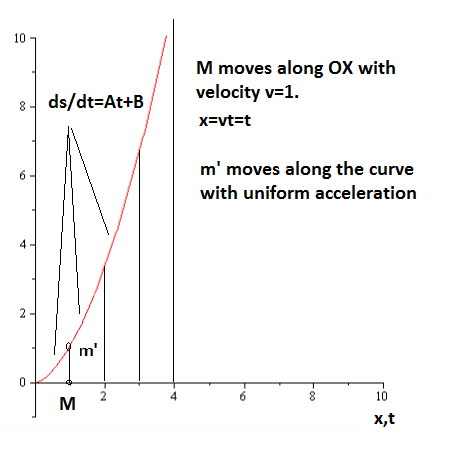Once upon a time I was travelling by train and noticed an intresting optic effect I started to think about in terms of math. Let's consider two examples of curves: 1)The curve defined by the differential equation in polar coordinates $r'(t)^2 + r(t)^2 = t^2$ with $r(0)=0$, $r"(0)>0$
It is easy to see that the junction point of the curve and the ray uniformly rotated in the origin coordinates moves uniformly accelerated.
- The curve defined by differential equation
$y'=\sqrt{A^2x^2-1}$, where $A$ - const >0; the junction point of the curve and the ray uniformly moved along abscissa axis moves unifromly accelarated -

- let me explain how I see the 'uniformly accelerated surface": the crossing line of the 'uniformly accelerated surface" and a predefined surface which is moved uniformly moves uniformly accelerated. For eg. let's extend eg 2 above: a plane moves along abscissa axis and crosses the uniformly accelerated surface according to the lines of the example above.
One may to create similar examples where we get the unifromly accelerated curves. My question what is the simplest way to describe all kind of curves ( or even surfaces)?
